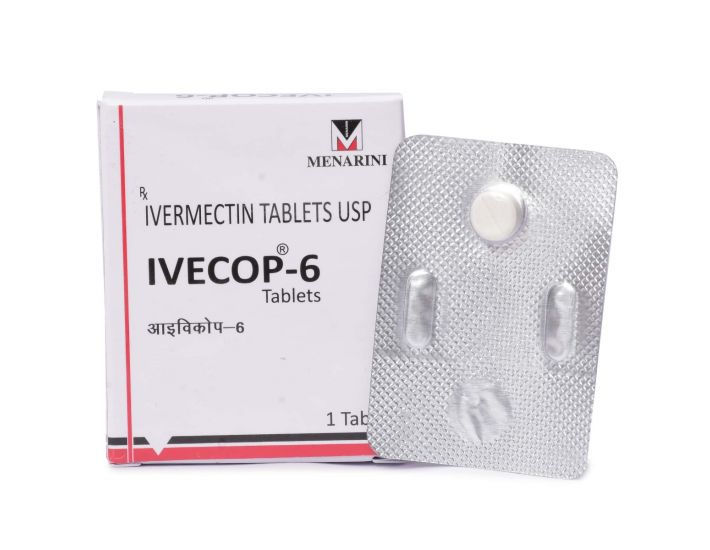The FDA-approved drug ivermectin inhibits the replication of SARS-CoV-2 in vitro
- info
- Sep 27, 2021
- 6 min read
Abstract
Although several clinical trials are now underway to test possible therapies, the worldwide response to the COVID-19 outbreak has been largely limited to monitoring/containment. We report here that Ivermectin, an FDA-approved anti-parasitic previously shown to have broad-spectrum antiviral activity in vitro, is an inhibitor of the causative virus (SARS-CoV-2), with a single addition to Vero-hSLAM cells 2 h post-infection with SARS-CoV-2 able to effect ~5000-fold reduction in viral RNA at 48 h. Ivermectin, therefore, warrants further investigation for possible benefits in humans.
Introduction
Ivermectin is an FDA-approved broad-spectrum anti-parasitic agent (Gonzalez Canga et al., 2008) that in recent years we, along with other groups, have shown to have anti-viral activity against a broad range of viruses (Gotz et al., 2016; Lundberg et al., 2013; Tay et al., 2013; Wagstaff et al., 2012) in vitro. Originally identified as an inhibitor of the interaction between the human immunodeficiency virus-1 (HIV-1) integrase protein (IN) and the importin (IMP) α/β1 heterodimer responsible for IN nuclear import (Wagstaff et al., 2011), Ivermectin has since been confirmed to inhibit IN nuclear import and HIV-1 replication (Wagstaff et al., 2012). Other actions of ivermectin have been reported (Mastrangelo et al., 2012), but ivermectin has been shown to inhibit nuclear import of host (eg. (Kosyna et al., 2015; van der Watt et al., 2016)) and viral proteins, including simian virus SV40 large tumor antigen (Tag) and dengue virus (DENV) non-structural protein 5 (Wagstaff et al., 2012, Wagstaff et al., 2011). Importantly, it has been demonstrated to limit infection by RNA viruses such as DENV 1-4 (Tay et al., 2013), West Nile Virus (Yang et al., 2020), Venezuelan equine encephalitis virus (VEEV) (Lundberg et al., 2013) and influenza (Gotz et al., 2016), with this broad-spectrum activity believed to be due to the reliance by many different RNA viruses on IMPα/β1 during infection (Caly et al., 2012; Jans et al., 2019). Ivermectin has similarly been shown to be effective against the DNA virus pseudorabies virus (PRV) both in vitro and in vivo, with ivermectin treatment shown to increase survival in PRV-infected mice (Lv et al., 2018). Efficacy was not observed for ivermectin against Zika virus (ZIKV) in mice, but the authors acknowledged that study limitations justified re-evaluation of ivermectin's anti-ZIKV activity (Ketkar et al., 2019). Finally, ivermectin was the focus of phase III clinical trial in Thailand in 2014–2017, against DENV infection, in which a single daily oral dose was observed to be safe and resulted in a significant reduction in serum levels of viral NS1 protein, but no change in viremia or clinical benefit was observed (see below) (Yamasmith et al., 2018).

Ivermectin is a potent inhibitor of the SARS-CoV-2 clinical isolate Australia/VIC01/2020. Vero/hSLAM cells were infected with SARS-CoV-2 clinical isolate Australia/VIC01/2020 (MOI = 0.1) for 2 h before addition of vehicle (DMSO) or Ivermectin at the indicated concentrations. Samples were taken at 0–3 days post-infection for quantitation of viral load using real-time PCR of cell-associated virus (A) or supernatant (B). IC50 values were determined in subsequent experiments at 48 h post-infection using the indicated concentrations of Ivermectin (treated at 2 h post-infection as per A/B). Triplicate real-time PCR analysis was performed on the cell-associated virus (C/E) or supernatant (D/F) using probes against either the SARS-CoV-2 E (C/D) or RdRp (E/F) genes. Results represent mean ± SD (n = 3). 3 parameter dose-response curves were fitted using GraphPad prism to determine IC50 values (indicated). G. Schematic of ivermectin's proposed antiviral action on coronavirus. IMPα/β1 binds to the coronavirus cargo protein in the cytoplasm (top) and translocates it through the nuclear pore complex (NPC) into the nucleus where the complex falls apart and the viral cargo can reduce the host cell's antiviral response, leading to enhanced infection. Ivermectin binds to and destabilizes the Impα/β1 heterodimer thereby preventing Impα/β1 from binding to the viral protein (bottom) and preventing it from entering the nucleus. This likely results in reduced inhibition of the antiviral responses, leading to a normal, more efficient antiviral response.




Comments